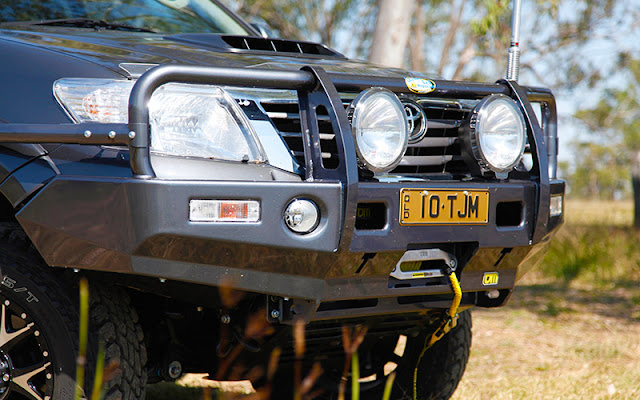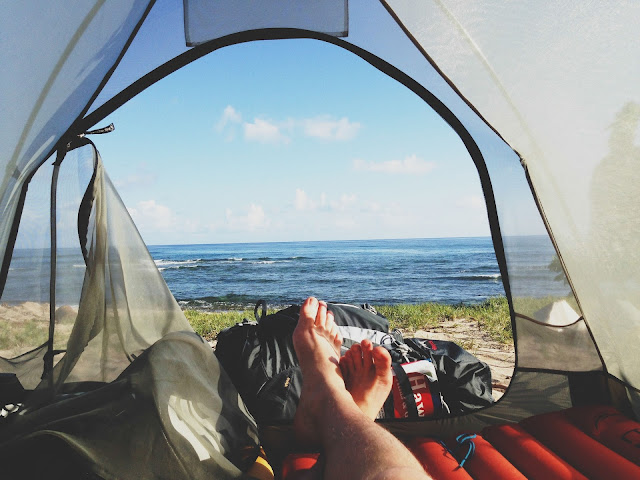4x4 Buying Overview - Bull Bars
For all the avid 4WD lovers out there, you’ll
know that there is a massive variety of 4x4 products and accessories available,
however none are more popular than the good old fashioned bull bar. While they may look quite similar,
there are countless types of bull bars on offer and choosing the ideal bull bar
for your needs isn't as straightforward as it appears.
Lots of people make the mistake of trying to save
a couple of bucks, so they'll jump on the web and purchase a cheap bull bar and
install it on their own. While this may work in some cases, there's many
different variables that have to be considered, and this guide will help you
understand bull bars in greater depth so you can make the right choice when
purchasing your most vital vehicle protection equipment.
Bull Bar Materials
Bull bars are essentially constructed from three
types of material: steel, aluminium, and plastic. Steel is the oldest and
continues to be the most popular bull bar given its strength and reliability,
however aluminium bull bars are getting more attention these days due to its
proportionate strength yet significantly lower weight. Despite this, aluminium
bull bars are significantly more pricey than steel bull bars, and have lower
tensile strength, so the type of landscape you'll be dealing with will make all
a significant difference in your decision-making. Plastic bull bars, on the
other hand, are mainly used in and around the city where protection is
necessary however the impact on pedestrians is drastically reduced.
Aluminium bull bars are lighter in weight, giving
your 4WD room to pack more equipment for your trip, however they are higher
maintenance due to its shiny finish. They're also more costly than steel bull
bars considering that they don't rust (and perfect for the beach), but you'll
use less fuel and likely won't need to adjust your front suspension. Conversely,
steel bull bars provide the greatest protection against all types of
collisions, however you'll have to take into consideration the weight of the
bull bar and adjust your vehicles suspension as necessary.
Bull Bar Styles
When you've determined the best bull bar material
for your needs, the next action is to decide on what style is most suitable.
There are many styles of bull bars that are suited for different conditions,
and bull bar styles will differ from brand to brand and with the type of
vehicle. For instance, the famous TJM Hilux bull bar will differ substantially
from another brand.
●
Bumper Bar - The most basic type of front-end protection that only protects your
stock fender
●
Single Hoop - A fashionable style of bull bar, the single hoop is affixed to the
bumper section and hoops over the radiator, offering an impressive balance
between weight and front-end protection
●
Triple Hoop - Covering the entire front-end of your vehicle, the triple hoop is
highly recommended when driving in areas that are prone to animal strikes. The
downside is that this style of bull bar is rather heavy and suspension will
need to be adjusted
●
Nudge Bar - Mainly used for cosmetic reasons, the nudge bar is designed for
light impacts and is not suited to tolerate any substantial collisions
The most common styles of bull bars are the
single hoop and triple hoop given that they deliver greater protection for
vital parts of your vehicle, particularly the radiator and cooling system. The
single hoop covers the grill and provides protection to the radiator only,
while the triple hoop stretches the whole front-end including headlight
protection.
Single hoops offer a better visual appeal since
it doesn’t completely hide the front of your 4WD, and therefore better suited
to light off-road adventuring. If you intend to show off your 4x4, then the
single hoop is probably the best choice for you. However, triple hoops offer
much better protection against all kinds of collisions, but does hide the front
of your vehicle (which can be a good thing in some cases)!
ADR Compliance
It's critical to note that it's a legal
requirement that only bull bars that adhere to the Australian Design Standards
are installed on any 4WD vehicle in Australia. This will make certain that the
bull bar absorbs the proper impact, won't block headlights, and guarantee that
airbags are deployed successfully. Purchasing a non-ADR compliant bull bar will
not only put your life in jeopardy, but will also greatly endanger pedestrians.
You can check out the compliance plate by viewing the inside of the bull bar,
so be sure you do this before making any decisions!
If you're interested in purchasing a bull bar for
your 4WD, TJM are one of Australia's most credible 4x4 vehicle protection
brands and have a wide-range of ADR compliant bull bars in over 80 locations throughout
Australia. To find the TJM store closest to you, visit our store
locator.




Comments
Post a Comment